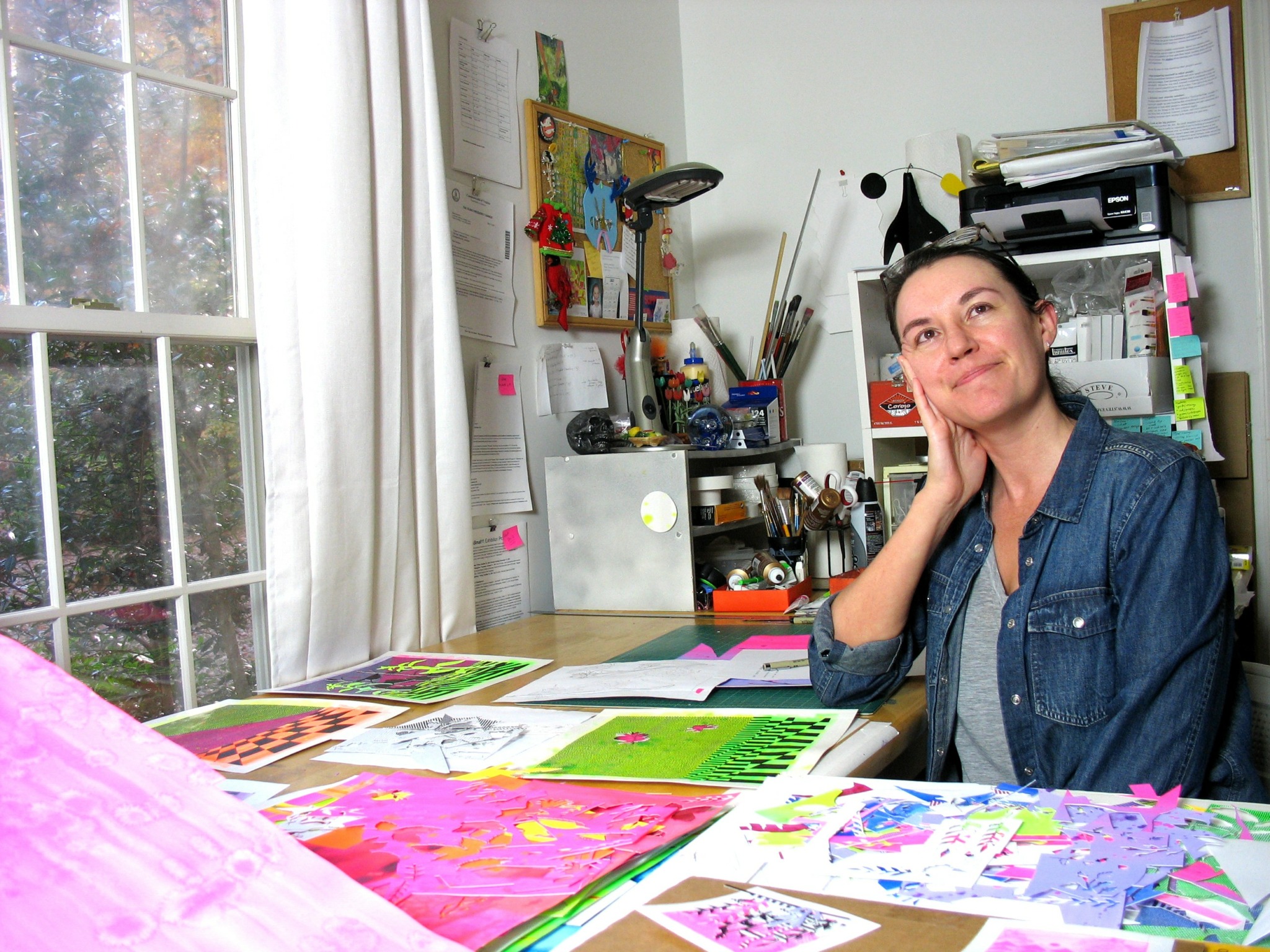We recently connected with Nikki Painter and have shared our conversation below.
Nikki, thanks for taking the time to share your stories with us today Do you have a hero? What have you learned from them?
An artist-hero for me is Judy Pfaff. The first time I saw her work, it was on the cover of an art book in the National Gallery of Art, and it changed the trajectory of my path as an artist. I had never seen “maximalist” work before, and everything in me said, “WOW. This is how art should feel.” Her work gave me permission to pursue a more-is-more aesthetic.
Other artists I think of similarly are Louise Nevelson and Bridget Riley. Nevelson for the sheer uniqueness and ingenuity of how she transformed found materials into what read as otherworldly monuments. Riley for the way she championed pattern and color not as decoration, but as subjects of an artwork with agency and purpose.
I have not met any of these women, but I am grateful for the ways they forged their own paths and how their work continues to say “yes” to my own.


Nikki, love having you share your insights with us. Before we ask you more questions, maybe you can take a moment to introduce yourself to our readers who might have missed our earlier conversations?
I am a visual artist working in mixed media to create works on paper, sculpture, and installations.
From a very young age, I loved to draw, and a core memory is drawing pictures of the Sunday comics with my grandfather. When I first learned about what an “artist” was (maybe at age 5), I thought, “That is me. That is what I am going to do.”
My current work revolves around my ideas about the garden as a site of abundance and heightened experience. My mixed media Garden works on paper combine painting with drawing and collage to portray plants in patterned spaces. I call them “gardens” because I imagine them as places that are alive and changing. Observing nature and hand drawing intricate patterns are forms of meditation for me. Patterns within my Gardens are not decorative: they imply depth and space, and they build a buzzing energy. Black patterns contrast the works’ subject matter, adding gravitas and serving as a reminder that beauty can have an edge.
There are several series of work within my body of Garden works: Night Gardens, Sunset Gardens, and Layered Gardens. Night Gardens and Sunset Gardens consist of pen drawing, with painted gouache grounds, and collage on paper. Night Gardens convey a somber, introspective atmosphere, while Sunset Gardens reference the bittersweet, outrageously beautiful moments immediately before we lose the light. Layered Gardens are low relief sculptures, consisting of gouache, colored pencil, and pen on layered paper and foam board. They are meant to feel ethereal and joyful.
I also recently created a new installation after a 10 year hiatus from the medium. Titled “Garden Crush,” it is large-scale and combines aspects of all of my Garden series in an eclectic work made of painted found objects, faux plants, paper mache, and wood cut-outs.
My Garden works celebrate the complexity of existence: our lives are fragile, always changing, and filled with astonishing beauty. You can check out all of them in my solo exhibition, “Pattern Gardens,” on view from June 6th to July 18th at Second Street Gallery in Charlottesville, Virginia.

Learning and unlearning are both critical parts of growth – can you share a story of a time when you had to unlearn a lesson?
One of the beliefs that I had to unlearn about being an artist was that my career would follow a consistently upward trajectory, i.e. that each show/opportunity would lead to others and that I would steadily earn more and more income from my work. This has unfortunately not always been the case.
Being an artist, for me, has included plateaus and times when it felt like nothing was happening professionally, and maybe nothing would again.
Fortunately, my main interest is in the work: making it and pushing it forward, and this allows the times when the work is not being exhibited to be productive periods of making, reflection, and revision.
The work itself is the goal. It is the only one that I control.

What’s the most rewarding aspect of being a creative in your experience?
Being an artist has many rewarding aspects. One is visual problem-solving to create something new (or new-ish, since the familiar saying is that there is nothing truly new anymore). Through my work, I invent spaces that have a complex emotional or psychological resonance. I think of this as being similar to instrumental music. We enjoy it for its sounds and its vibes, and it doesn’t have to communicate one specific message. The evocative qualities are the message.
It is rewarding when a work I made continues to surprise me. When it provokes something in me that I want to re-experience and spend time with, that is rewarding, too.
It is also very rewarding when someone chooses to have an extended relationship with my work by collecting and living with it.
Contact Info:
- Website: https://nikkipainter.com
- Instagram: https://www.instagram.com/nikkipainter_art/








